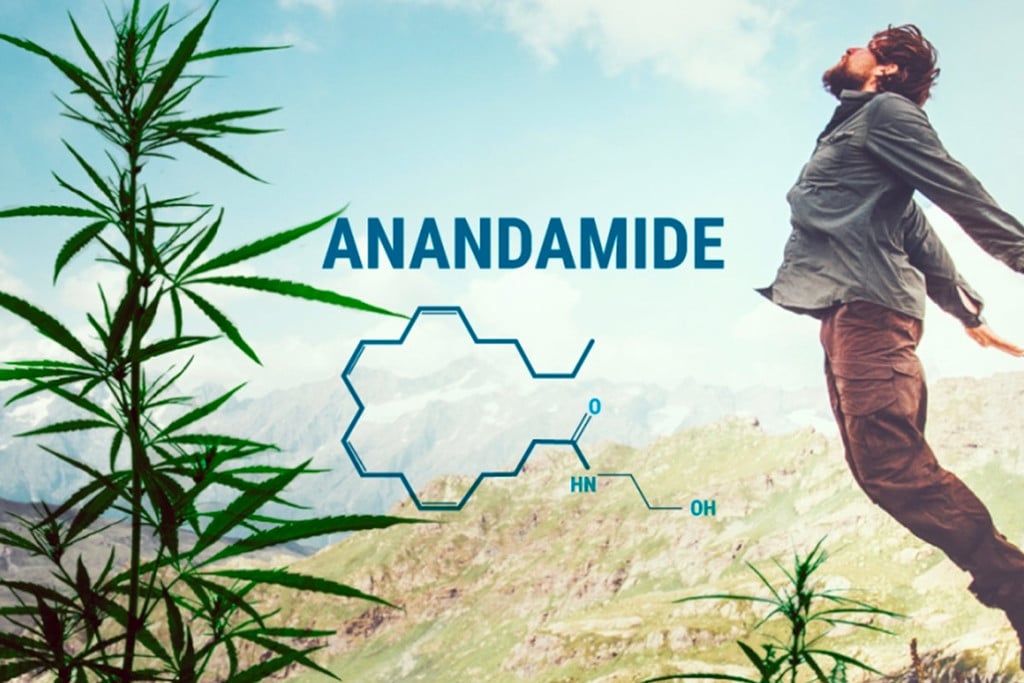.
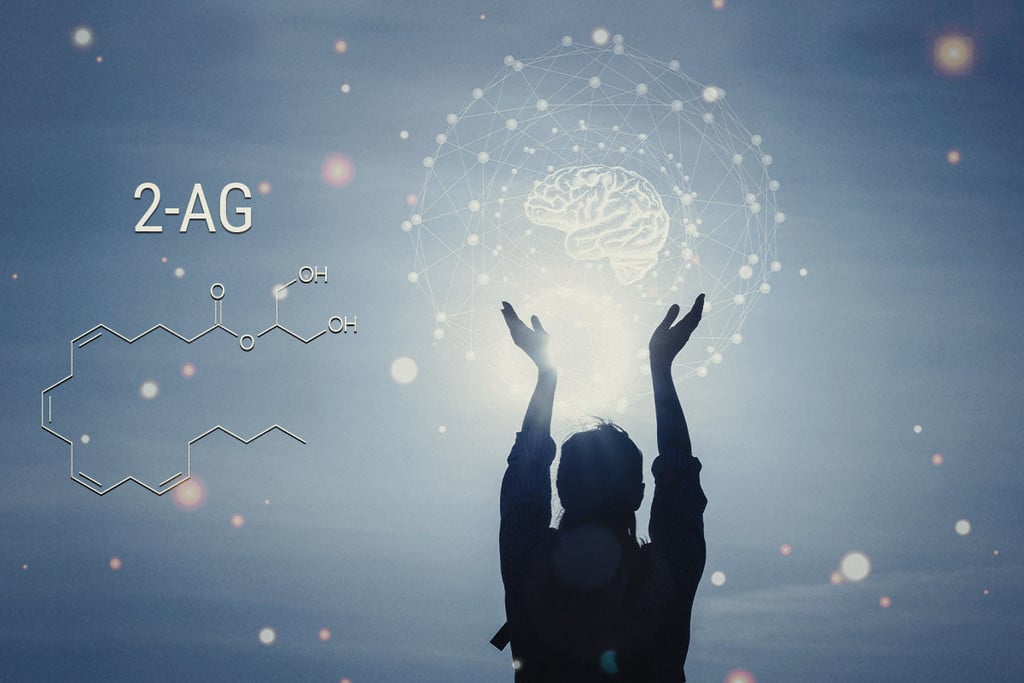
2-AG and the Endocannabinoid System
As the most abundant endocannabinoid in the brain, 2-AG flows between neurons to control neurotransmitter release. But this humble signalling molecule also helps to keep things in balance further afield. It keeps the immune system under control, drives appetite when the body needs food, and even impacts sexual arousal.
Contents:
2-Arachidonoylglycerol, aka 2-AG, plays a key role in the endocannabinoid system (ECS). This signalling molecule helps to govern a long list of physiological processes, including energy balance, inflammation, and even emotions and cognition[1]. It does so by activating the two major receptor types of the ECS: CB1 and CB2.
You’ve likely heard of the ECS by now; perhaps you’re even familiar with endocannabinoids such as anandamide (the bliss molecule). Now’s your chance to deepen your knowledge of this system and find out everything you need to know about 2-AG, what it does in the body, and how it relates to cannabis.
Who Discovered 2-AG?
If you’ve read anything about cannabis history, you’ve likely come across the name of Dr Raphael Mechoulam. This respected cannabis researcher, still actively working at the age of 91, achieved several breakthroughs during his career at Hebrew University in Israel. Alongside the discovery of THC, Mechoulam has helped to identify components of the ECS. He led the research teams that first isolated anandamide and 2-AG and proved their actions as signalling molecules within the ECS[2]. These ligands (molecules that bind to specific receptors) became known as endocannabinoids—“endo” meaning “within”.
In the case of 2-AG, Mechoulam’s team set out to explore ligands present in animal tissues. They came across 2-AG in 1995 and published their findings in the journal Biochemical Pharmacology[3]. After determining the structure of the new compound, they confirmed its binding affinity with ECS receptors.
What Is 2-AG?
2-AG binds to ECS receptors to create the necessary changes within target cells. Chemically speaking, it’s an ester formed from omega-6-arachidonic acid and glycerol that stems from arachidonic acid (AA).[4] Endocannabinoids like 2-AG are lipids (fats) that serve as chemical messengers within the ECS. Because the body manufactures 2-AG using omega-3 and omega-6 polyunsaturated fatty acids (PUFAs)[5], dietary choices alter endocannabinoid levels and likely change the “tone” of the ECS.[6]
2-AG holds the status as the most abundant endocannabinoid in the brain, and it’s recognised as the only full agonist of the primary ECS receptors. In other words, when it binds to either CB1 or CB2, the endocannabinoid fully activates the site. In contrast, anandamide only acts as a partial agonist of both receptors, with limited efficacy.
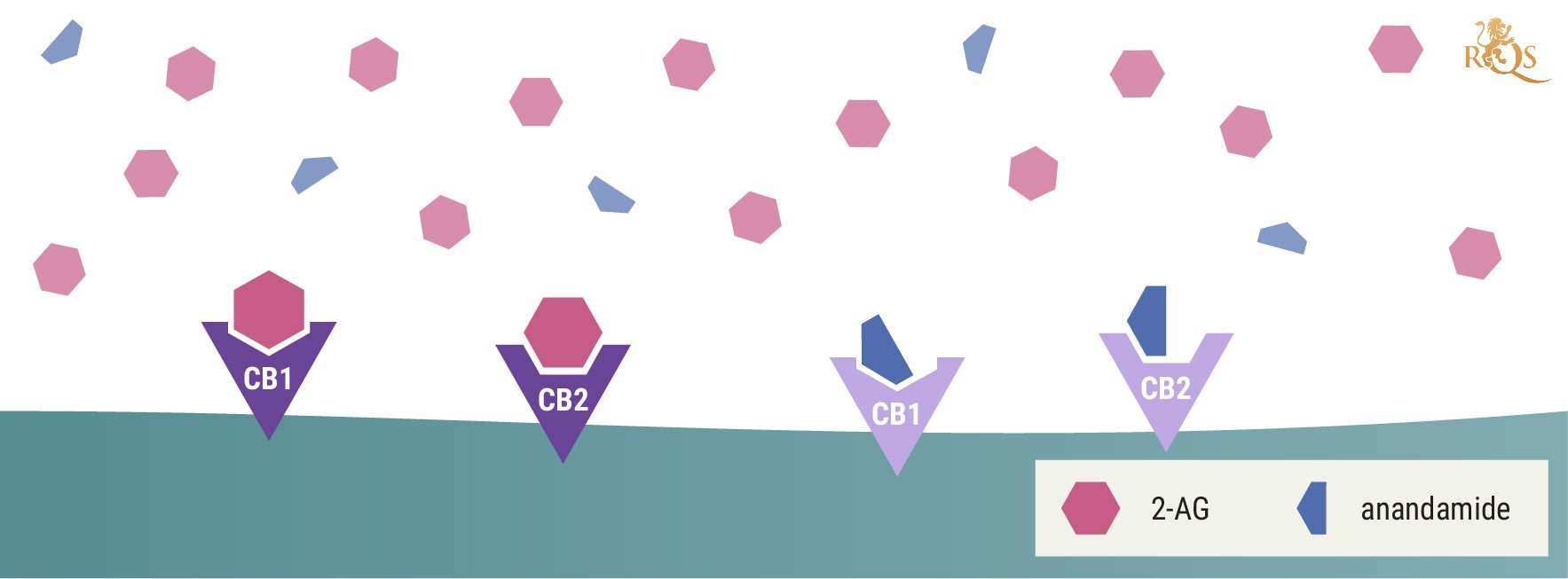
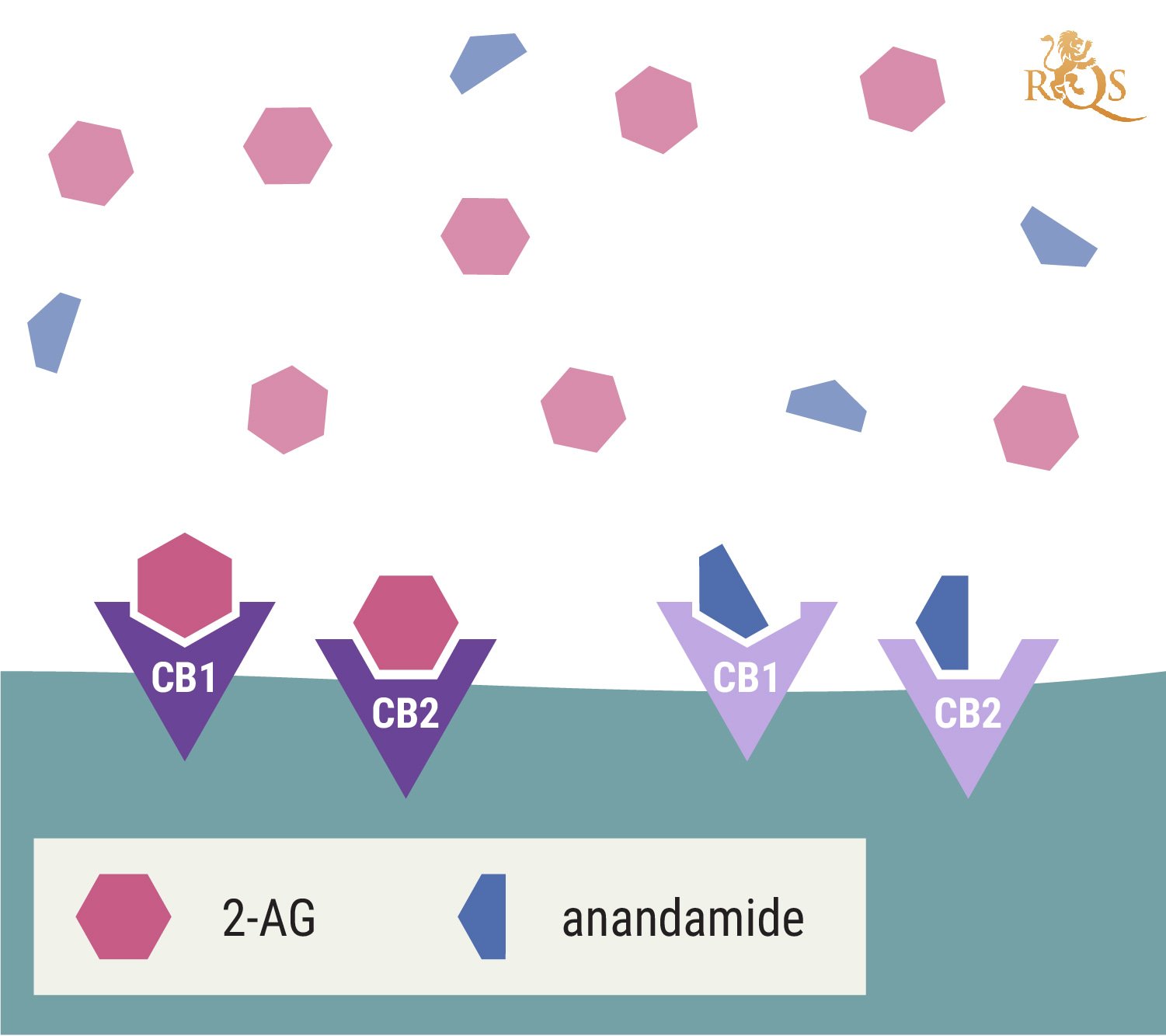
What Is the Function of 2-AG?
As an endocannabinoid, 2-AG works to transmit signals throughout the ECS. The primary ECS receptors show up all over the body, from the skin and bones to the central nervous system and immune system. Because the body needs 2-AG to modulate these sites, the endocannabinoid appears in the same places. Check out the functions of 2-AG in key systems and processes of the body.
Central Nervous System
In the central nervous system and brain, 2-AG regulates neurotransmitter release—a pretty big responsibility when you consider these chemicals dictate the way we behave, feel, and perceive reality! So, how does this little chemical achieve such a great feat? First, we need to dive a little deeper into the nature of neurons.
Neurons send signals to each other via chemical impulses that result in the release of neurotransmitters (brain chemicals). When an impulse reaches the end of a presynaptic neuron, it prompts the release of a chemical that crosses the synaptic cleft (the gap between two neurons) and binds to a receptor on the surface of the postsynaptic neuron.
Most neurotransmitters travel in the “anterograde” fashion mentioned above. However, 2-AG turns the norm on its head. This endocannabinoid travels in a retrograde manner, meaning it travels back across the synaptic cleft against the flow.[7] Why? Because this enables postsynaptic cells to control incoming traffic. By latching onto ECS receptors on presynaptic neurons, 2-AG manages to modulate incoming GABA and glutamate signals, helping to control the brain’s state of excitation.
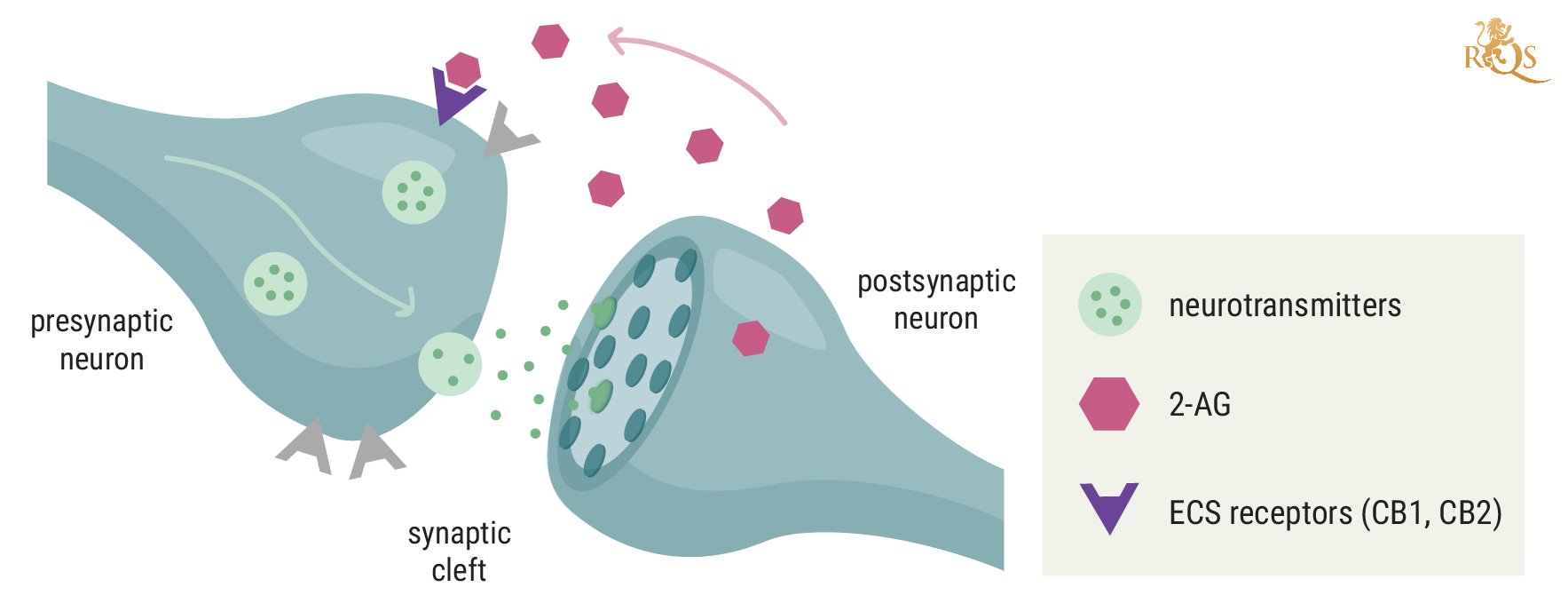
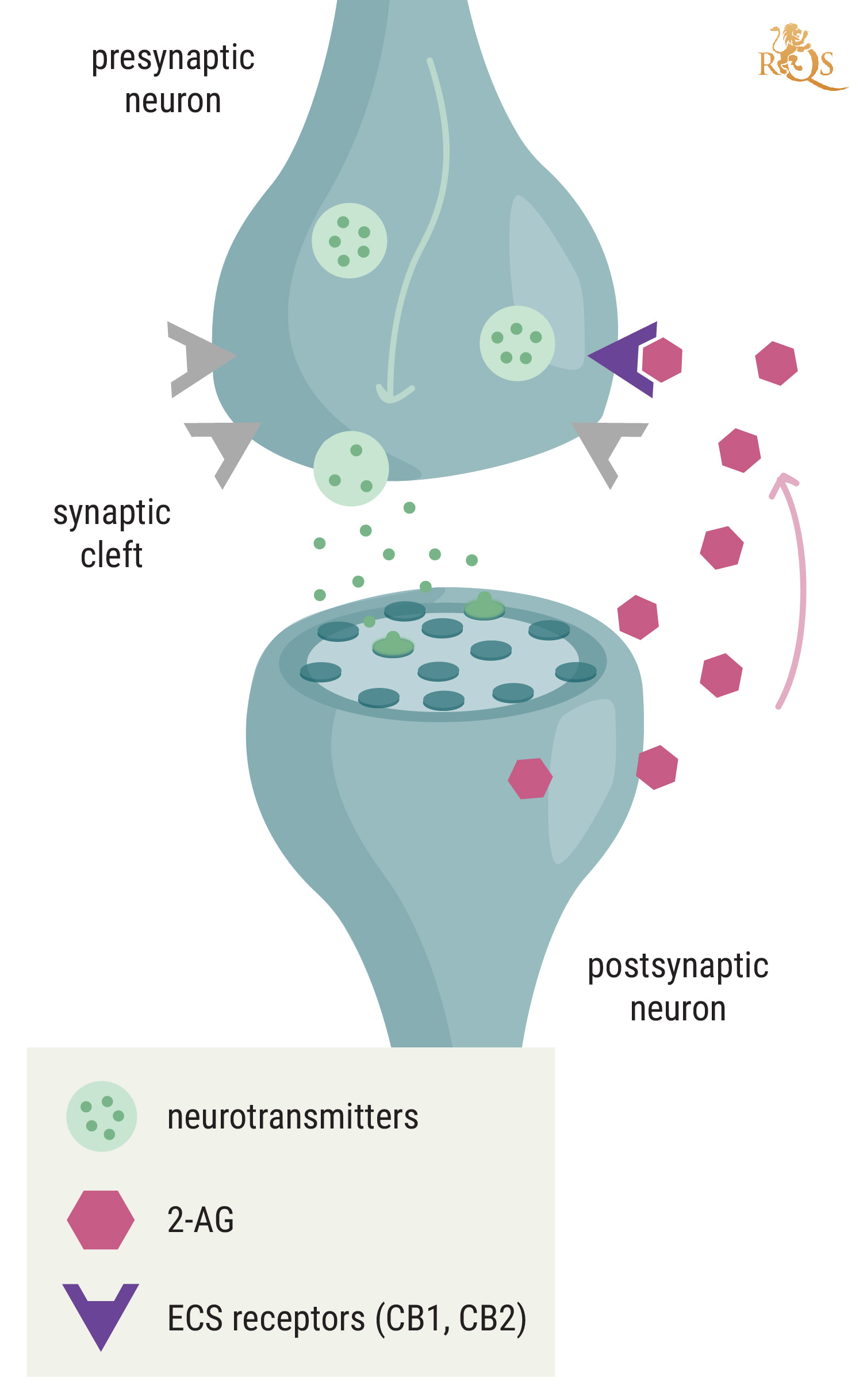
Immune System
The ECS also helps to strike a balance within the immune system. Immune cells possess both CB1 and CB2 receptors, and produce endocannabinoids, including 2-AG, that modulate them.[8] These cell types include:
| B cells | Produce antibodies to combat bacterial and viral infections |
| Natural killer cells | White blood cells that form part of the innate immune system and detect virus-infected cells |
| Monocytes | Help to deter pathogens and contribute toward both inflammatory and anti-inflammatory processes |
| B cells | Produce antibodies to combat bacterial and viral infections |
| Natural killer cells | White blood cells that form part of the innate immune system and detect virus-infected cells |
| Monocytes | Help to deter pathogens and contribute toward both inflammatory and anti-inflammatory processes |
Just as 2-AG helps to dampen neurotransmitter firing in the brain when required, it also assists in regulating immunity by preventing reactions from getting out of hand. Immune cells secrete inflammatory substances that help to bolster the body's defences. However, an overly aggressive immune system can lead the body to turn on itself through both acute and chronic autoimmune reactions.
Endocannabinoids such as 2-AG play the role of potent immunomodulators; they help to inhibit antibody formation when necessary, facilitate the self-destruction of unwanted immune cells, and reduce inflammatory molecules that would otherwise cause trouble.
Appetite Stimulation
If you’ve ever smoked cannabis, you’ll be familiar with the “munchies”. After a couple of joints and some deep conversation, it doesn’t take long for that ravenous hunger to set in. You see, the ECS also regulates appetite.
2-AG lights up CB1 receptors in areas of the brain responsible for the homeostasis of food intake.[9] Whenever you wake up in the morning or skip a meal during the day, this endocannabinoid starts firing to let you know it’s time to chow down. THC also targets CB1 receptors, hence why you feel the need to raid the fridge every time you smoke a bowl.
Sexual Function
The far reaches of the ECS also include regulating sexual arousal. Early research in this area suggests that normal circulating levels of 2-AG and anandamide may put a cap on feelings of sexual desire.
A study published in The Journal of Sexual Medicine found that concentrations of endocannabinoids significantly decrease as feelings of sexual arousal arise.[10] These results suggest that endocannabinoids are the gatekeepers of feelings of sexual arousal, and a cascade that results from these feelings works to temporarily suppress them.
Where Is 2-AG Found?
2-AG occurs all throughout the body, where it helps to maintain homeostasis across myriad physiological systems. Cells produce the endocannabinoid on demand as needed. The metabolic enzyme diacylglycerol (DAG) chiefly synthesises 2-AG, whereas the enzyme monoacylglycerol (MAG) swiftly degrades it.[11]
How Is 2-AG Related to Anandamide?
2-AG and anandamide are related in the sense that they are both endocannabinoids. Both act as signalling molecules within the ECS, and therefore help to keep many bodily processes in balance. While 2-AG works to fully activate both CB1 and CB2, anandamide only partially activates them. However, anandamide also fully activates TRPV1, a proposed CB3 receptor involved in pain signalling.
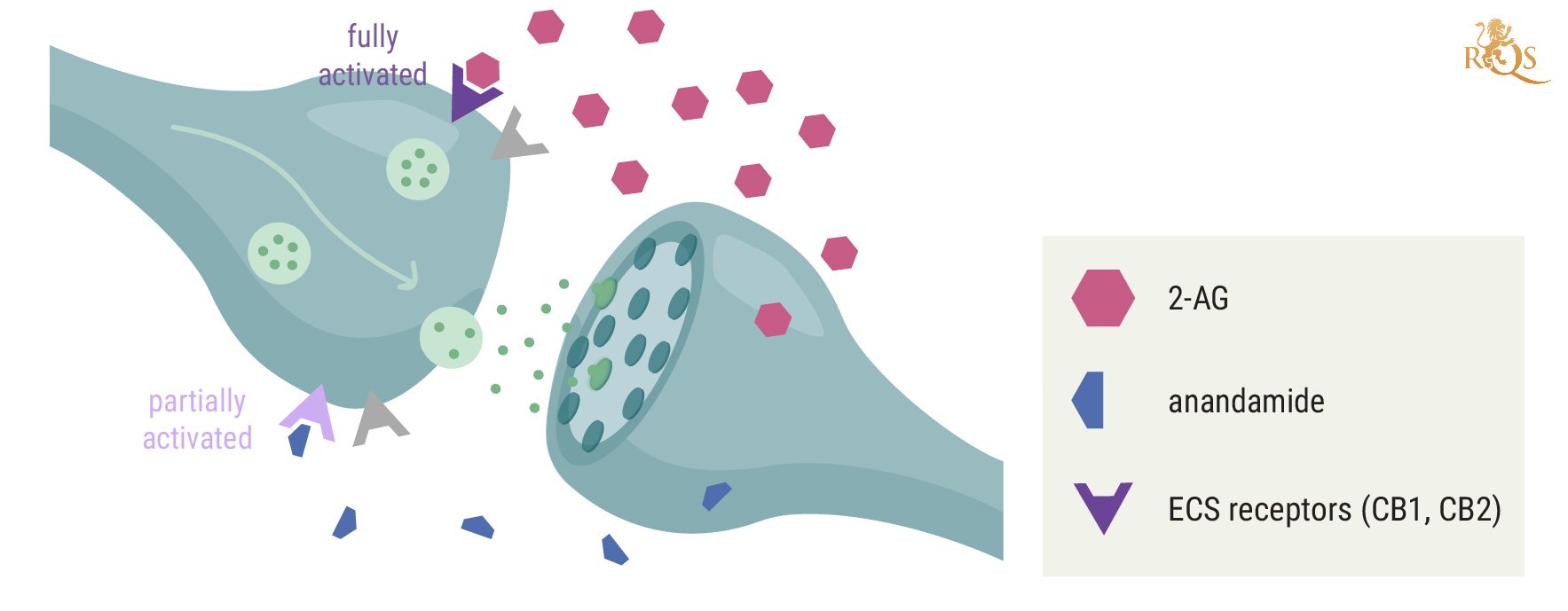
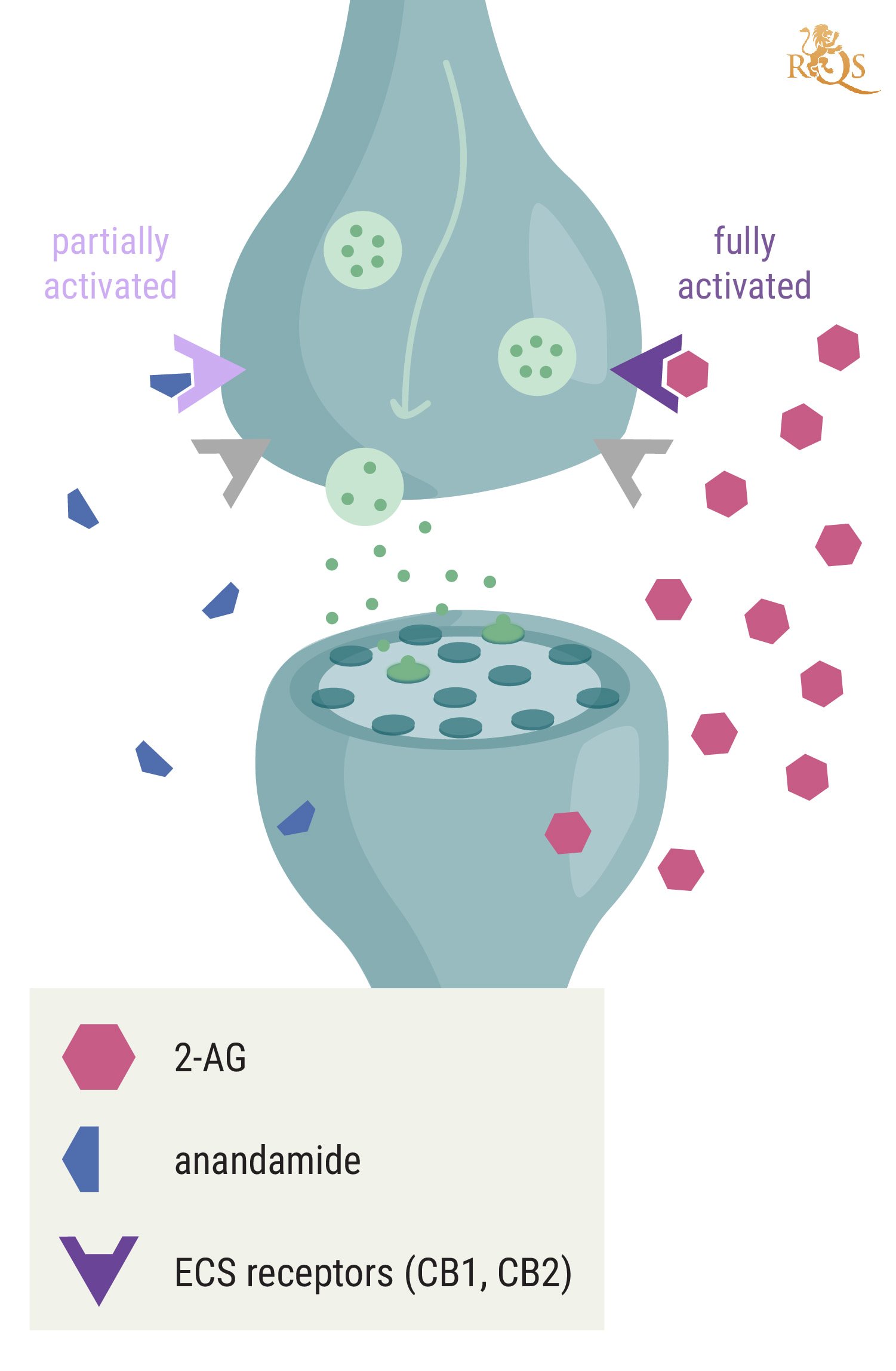
How Is 2-AG Related to Cannabis?
You won’t find 2-AG in your favourite cannabis strain. As an endogenous cannabinoid, it appears only in the tissues of animal species that possess an ECS. With that said, molecules derived from cannabis have a very similar effect to 2-AG in the body. Cannabinoids such as THC and CBD belong to a chemical family named after their effect on ECS receptors. THC, much like 2-AG, binds with both CB1 and CB2.
Why Do Cannabinoid Receptors Have More Than One Endogenous Ligand?
Both 2-AG and anandamide bind to the two primary ECS receptors. But why does the body need both of these molecules? Due to their different binding affinities, each molecule produces a different effect, even though they bind to the same receptor site.
The ECS: A Rapidly Evolving Area of Research
Congratulations, you’re now much more familiar with another important component of the ECS! But this article has barely scratched the surface. Ongoing studies are continually discovering new components of this network and their unique roles in the body. Much of the information currently known about 2-AG will evolve over time, so the key to keeping up to date with the research is: don’t stop learning!
- 2-Arachidonoylglycerol: A signaling lipid with manifold actions in the brain - PubMed https://pubmed.ncbi.nlm.nih.gov
- The 90th Birthday of Professor Raphael Mechoulam, a Top Cannabinoid Scientist and Pioneer - PubMed https://pubmed.ncbi.nlm.nih.gov
- Identification of an endogenous 2-monoglyceride, present in canine gut, that binds to cannabinoid receptors - PubMed https://pubmed.ncbi.nlm.nih.gov
- 2-Arachidonoylglycerol | C23H38O4 - PubChem https://pubchem.ncbi.nlm.nih.gov
- Emerging class of omega-3 fatty acid endocannabinoids & their derivatives - PubMed https://pubmed.ncbi.nlm.nih.gov
- Care and feeding of the endocannabinoid system: a systematic review of potential clinical interventions that upregulate the endocannabinoid system - PubMed https://pubmed.ncbi.nlm.nih.gov
- Endocannabinoid-mediated retrograde modulation of synaptic transmission - PubMed https://pubmed.ncbi.nlm.nih.gov
- Endocannabinoids and immune regulation - PubMed https://pubmed.ncbi.nlm.nih.gov
- Endocannabinoids: an appetite for fat - PubMed https://pubmed.ncbi.nlm.nih.gov
- Circulating endocannabinoid concentrations and sexual arousal in women - PubMed https://pubmed.ncbi.nlm.nih.gov
- Biosynthesis and degradation of the endocannabinoid 2-arachidonoylglycerol - PubMed https://pubmed.ncbi.nlm.nih.gov


























